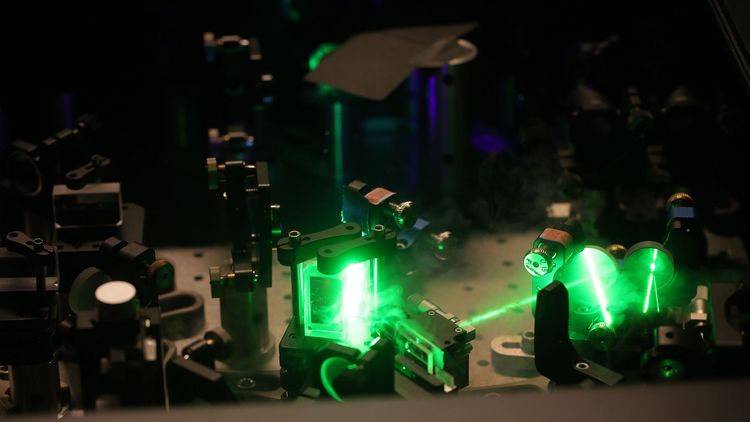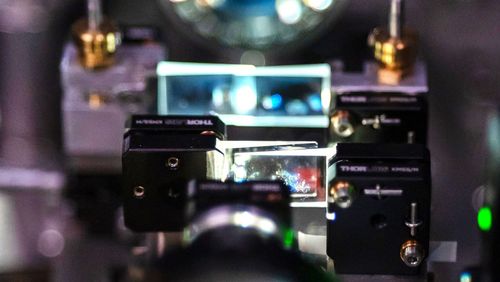Nanoparticles made of metals and semiconductors have fascinating properties. A German-Swedish research team reports in the journal Nature Communications how a new material enhances light emission.
Tiny particles composed of metals and semiconductors could serve as light sources in components of future optical computers, as they are able to precisely localize and extremely amplify incident laser light. A team from Germany and Sweden led by Prof. Dr. Christoph Lienau and Dr. Jin-Hui Zhong from the University of Oldenburg has now explained for the first time how this process works. The study is published in the current issue of the journal Nature Communications.
For their study, the team produced hybrid nanomaterials that combine the optical properties of metals and semiconductors. The starting point of the study were sponge-like gold particles with a diameter of several hundred billionths of a metre (nanometres) and pores with a size of around ten nanometres. The material scientists Dr. Dong Wang and Prof. Dr. Peter Schaaf from the Technical University of Ilmenau fabricated these nanosponges and further used advanced nanofabrication techniques to coat the sponges and infiltrate their tiny pores with a thin layer of the semiconductor zinc oxide.
Using photons for calculations
The particles are capable of changing the colour of an optical light beam. For example, if they are irradiated with the light of a red laser, they might emit blue laser light, which has a shorter wavelength. The emitted colour depends on the properties of the material. "Creating such so-called nonlinear optical materials with nanoscale dimensions is one of the grand challenges in current optics research," Lienau reports. In future optical computers, which might use light instead of electrons for calculations, such nanoparticles could serve as tiny light sources. "You could call such particles nanolasers," adds Zhong, who together with Dr. Jan Vogelsang from Lund University is the lead author of the study. Possible applications include ultrafast optical switches or transistors.
When metals and semiconductors unite
In order to elucidate how nanomaterials convert light of one colour into another, team members led by Prof. Dr. Anne L'Huillier and Prof. Dr. Anders Mikkelsen from Lund University in Sweden used a special microscopic method, ultrafast photoemission electron microscopy. Combining extremely short flashes of light with an electron microscope, they were able to directly show that light is efficiently concentrated in the nanopores – an important prerequisite for its future application. Prof. Dr. Erich Runge, a physicist from the Technical University of Ilmenau, simulated the properties of the material with theoretical models. As the team reports, nanoparticles composed of metals and semiconductors probably offer new opportunities for adjusting the properties of the emitted light. "Our study provides fundamental new insights into how hybrid metal-semiconductor nanostructures amplify light," says Zhong. In addition, the observations could help develop materials with even better optical properties.
The research group "Ultrafast Nano-Optics" at the University of Oldenburg headed by Prof. Dr. Christoph Lienau specializes in studying processes in the nanoworld with particularly high spatial and temporal resolution. The physicists have already achieved several significant breakthroughs in this field. Only recently, they developed a metallic superlens made of gold with previously unattained optical resolution.
Original article: Jin-Hui Zhong, Jan Vogelsang, Jue-Min Yi, Dong Wang, Lukas Wittenbecher, Sara Mikaelsson, Anke Korte, Abbas Chimeh, Cord L. Arnold, Peter Schaaf, Erich Runge, Anne L’Huillier, Anders Mikkelsen, Christoph Lienau: "Nonlinear plasmon-exciton coupling enhances sum-frequency generation from a hybrid metal/semiconductor nanostructure", Nature Communications. https://doi.org/10.1038/s41467-020-15232-w




